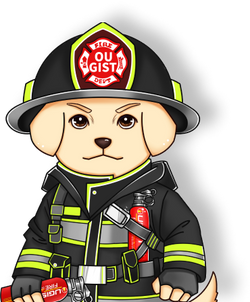Portable fire extinguishers are indispensable tools for preventing small fires from escalating into major disasters within your facility. Choosing the right fire extinguisher involves considering several factors, including the type and size of potential fires, specific hazards, presence of energized electrical equipment, and ambient temperature. This guide, based on recommendations from the National Fire Protection Association (NFPA) and Underwriters Laboratories (UL), aims to provide a comprehensive understanding of how to select, use, and maintain portable fire extinguishers effectively.

Five Classes of Fire Extinguishers: Fire extinguishers are categorized into five classes based on the type of fires they can effectively combat:
- Class A: Ordinary combustible materials like wood or paper
- Class B: Fires involving flammable liquids, combustible gases
- Class C: Energized electrical equipment
- Class D: Fires in combustible metals such as magnesium and titanium
- Class K: Specifically designed for cooking appliances with combustible cooking media like oils and fats
Understanding UL Ratings: UL ratings, provided by Underwriters Laboratories, indicate the capacity of Class A and Class B extinguishers:
- Class A extinguishers have ratings between 1 and 40, representing the amount of water equivalent to the chemical.
- Class B extinguishers have ratings expressed as B:C, with numbers between 10 and 320, indicating the square footage of coverage for Class B fires.

Considerations for Selection: Apart from fire classification and UL ratings, consider factors such as weight and ease of use. While extinguisher capacity is expressed in pounds, it's essential to be mindful of the weight of the extinguisher itself. Wall-mounted and wheeled options are available, with wheeled extinguishers typically used for higher capacities.
Determining Quantity and Placement: While OSHA does not specify the exact number of fire extinguishers a facility should have, it emphasizes the importance of the "travel distance" for employees to access extinguishers. Guidelines include:
- Class A: 75 feet or less
- Class B: 50 feet or less
- Class C: Distributed based on existing Class A or Class B hazards
- Class D: 75 feet or less
- Class K: No more than 30 feet
Frequently Asked Questions:
-
Can I inspect my own fire extinguisher?
- Yes, NFPA allows anyone to perform monthly inspections, but certified personnel should conduct maintenance.
-
What are the different sizes of portable fire extinguishers?
- Portable extinguishers vary in size, from 12 oz. to 300 lbs., with options ranging from wall-mounted units weighing a few pounds to wheeled carts for larger capacities.


